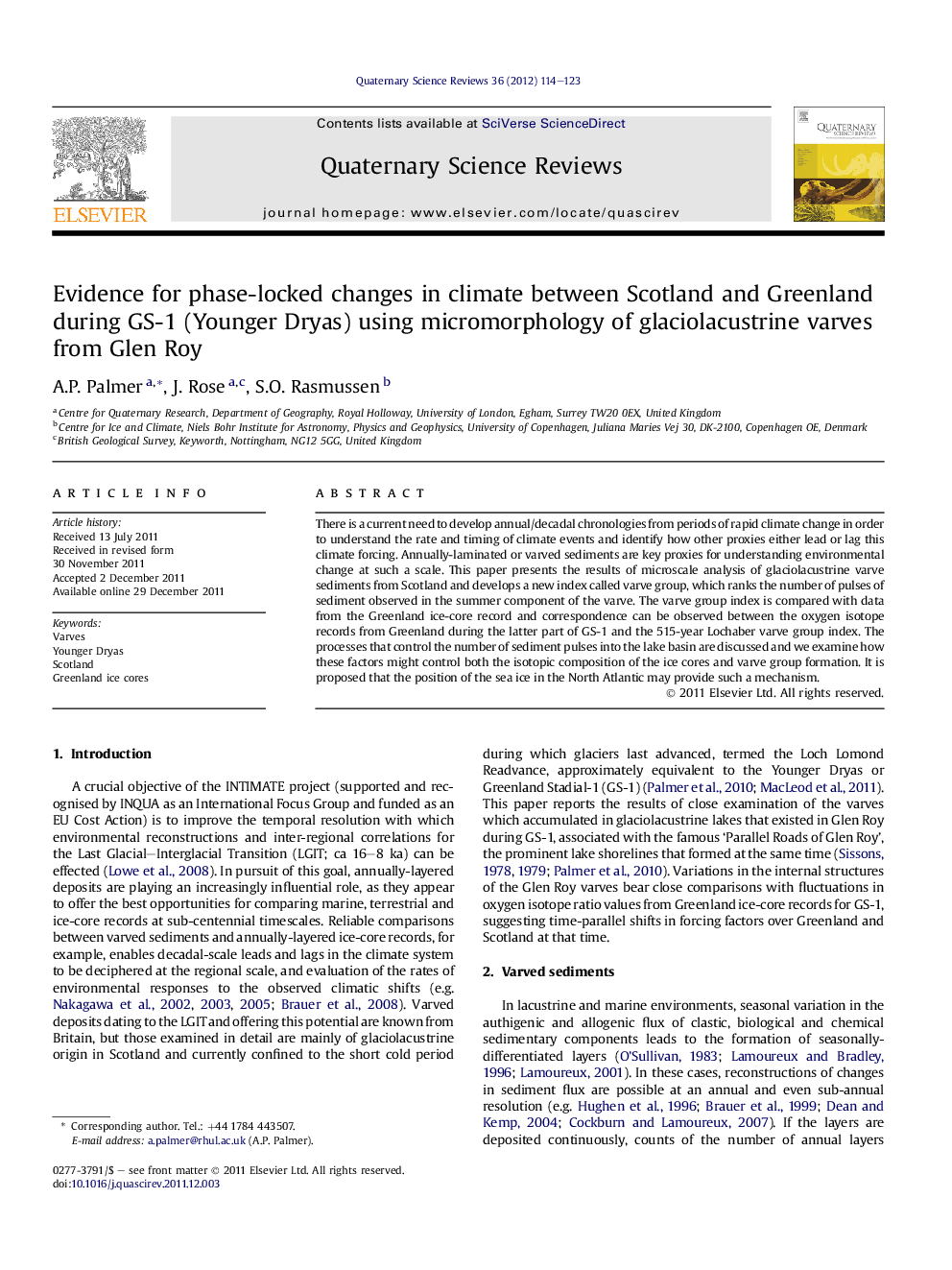| Article ID | Journal | Published Year | Pages | File Type |
|---|---|---|---|---|
| 4737476 | Quaternary Science Reviews | 2012 | 10 Pages |
There is a current need to develop annual/decadal chronologies from periods of rapid climate change in order to understand the rate and timing of climate events and identify how other proxies either lead or lag this climate forcing. Annually-laminated or varved sediments are key proxies for understanding environmental change at such a scale. This paper presents the results of microscale analysis of glaciolacustrine varve sediments from Scotland and develops a new index called varve group, which ranks the number of pulses of sediment observed in the summer component of the varve. The varve group index is compared with data from the Greenland ice-core record and correspondence can be observed between the oxygen isotope records from Greenland during the latter part of GS-1 and the 515-year Lochaber varve group index. The processes that control the number of sediment pulses into the lake basin are discussed and we examine how these factors might control both the isotopic composition of the ice cores and varve group formation. It is proposed that the position of the sea ice in the North Atlantic may provide such a mechanism.
